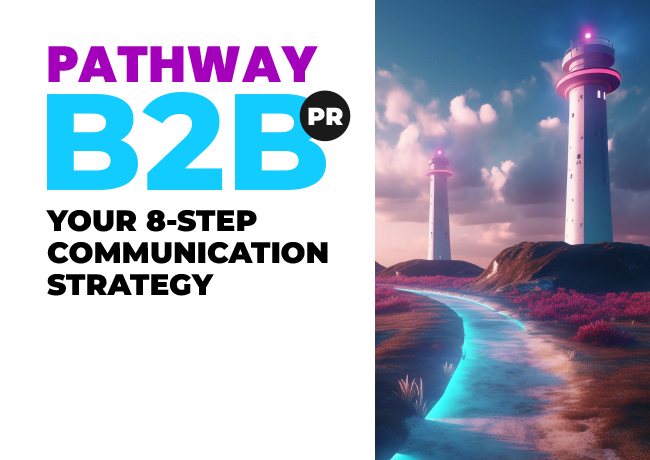
How does PR fit into a marketing strategy?
It may surprise you to learn that many marketing leads are unclear as to how or where PR should fit into a marketing strategy and as a result struggle to create the business case to secure appropriate budget approval.
Most marketers would like to be proactively managing their reputation, but many also regard it as a nice to have rather than an essential. Nearly all will be familiar with the legendary Bill Gates, quote: “If I was down to my last marketing dollar, I’d spend it on PR.”
So, why is it that some marketers still think their reputation offers little tangible commercial advantage and can look after itself? And why is the water between marketing and PR so ruddy muddy?!
One of the greatest benefits of harnessing the power of PR in your marketing strategy is the reach of the coverage which can’t be replicated across many other channels without major investment.
– Caroline Hurst, Marketing Director
How do the roles of Marketing & PR differ?
Marketing is the process of getting people interested in your company’s product or service.
The marketing lead’s role is to be the voice of the customer inside the business and to use this insight to help shape the ideal product, price, place (distribution method), and promotion to achieve the business goals. In a perfect world, the marketing strategy is rooted in research, not guesswork.
Public Relations is the process of establishing and nurturing your company’s reputation.
The role of PR is to manage your relationship with the public and critical influencers to your best advantage – educating, influencing, and persuading to guide and encourage informed discussion. Your PR strategy is rooted in expert knowledge of the media and the way influence works, not puff.

Both Marketers and PR professionals start their strategy with similar sets of questions, in fact, all the marketing disciplines do:
1 What are we trying to achieve?
2 Who is our target audience?
3 What pain point do we solve?
4 Why should they choose us over another supplier?
5 What do we want them to think/feel about the brand?
6 Where do we find them?
7 When do we need to act?
8 What hurdles do we face?
It is the nuances in the questions and the way the answers are used that fundamentally differ, as will the timing. Marketing asks these questions at the start of the planning cycle to bring challenges and opportunities to the attention of the business so that problems can be ironed out in relation to product design & availability, pricing points, distribution channels, and promotional vehicles and channels.
PR, et al, asks these questions once any associated wrinkles have been exposed, ironed out, or accepted by the business. Only then can we start shaping the engagement and campaign messaging and develop a creative interpretation that, in the case of PR, is designed to educate and persuade.
– Dan Young, Head of Marketing
How do you write a PR Strategy
If you Google ‘PR Strategy template’ you will find that most examples will cover the following five elements:
1 Context & background/research
2 Goals & objectives
3 Tools & methods
4 Schedule/timing tasks and budgets
5 Measurement
How can a marketer be strategic on a limited budget?
Few marketers working in a bootstrapped start-up or scale-up will have ‘ideal world’ budgets, time, or resources. As a result, they must prioritise and take tactical shortcuts in their strategic planning process.
In the absence of in-depth qualitative and quantitative customer and sector research, a marketer can still achieve a robust strategy that brings together the insight marketing needs by adopting a hybrid approach, which we call communication strategy development. This approach draws on the subject matter experts across the business to address key questions and share knowledge and insight. To achieve this, it is essential that subject matter experts in the following are involved in the process:
1 The thing you sell – who is responsible for its development
2 Your customers’ wants and needs – who is closest to the people who buy and use your ‘thing’
3 Operations – who delivers your ‘thing’ to customers
4 Commercial – who sets the price point(s)
5 Selling – who takes responsibility for achieving the sales you need at the pace you need them
6 Marketing – who is charged with getting people interested in your company’s ‘thing’

How to validate your marketing communication strategy
Once you have developed your communication strategy, you need to validate it with a dirty dozen of your most trusted advisors, customers, and associates. Do this by spending 20-40 mins discussing what they think you do well and could improve and so forth – there is a list of validation question areas on page 56 of the 8-step guide.
Use the insight you get from these conversations to fine-tune your comms strategy. If you’ve done the development work thoroughly there should be minimal updates and you can use the customer validation as evidence that your strategy and messaging are robust. This will be important when you get to the activation phase to keep everyone on track and focused.
(By the way…feel free to call the ‘communication strategy’ whatever you like to make it meaningful to your company. Just make sure it’s complete, specific, and meaningful. To achieve this, you’ll probably have a few heated debates along the way – this is GOOD as it means people are engaged and they care!)
This customer-validated shared view of the business regarding focus and priorities will inform the marketing plan, the business plan, product development, customer service, recruitment, and sales as well as any third party that marketing chooses to engage including PR, SEO, direct marketing, social, branding, web, ABM, etc.
– Caroline Hurst, Marketing Director
The communication strategy really is a case of one size fits all because it is comprehensive, informed, evidenced, and validated. For PR campaign planning & delivery, the communication strategy is your north star, directing and guiding what you should be saying to who, when, where, and how – which makes being impactful and creative far easier and cost-effective to achieve.
 Click here to find out more about our PR approach or take a quick look at our Business Case for B2B PR.
Click here to find out more about our PR approach or take a quick look at our Business Case for B2B PR.
Or, if you’d like to work with a different type of B2B PR Agency, why not get in touch today and have a no-strings attached chat about some of the key challenges you’re facing?

DOWNLOAD: Your 8-Step Communication Strategy
A complete guide to delivering your business plan

Your 8-Step Communication Strategy Guide
A comprehensive guide to delivering your business goals using intelligent and relevant messaging.
Subscribe to our updates
Stay up to date with the latest insights, case studies and PR guides.

